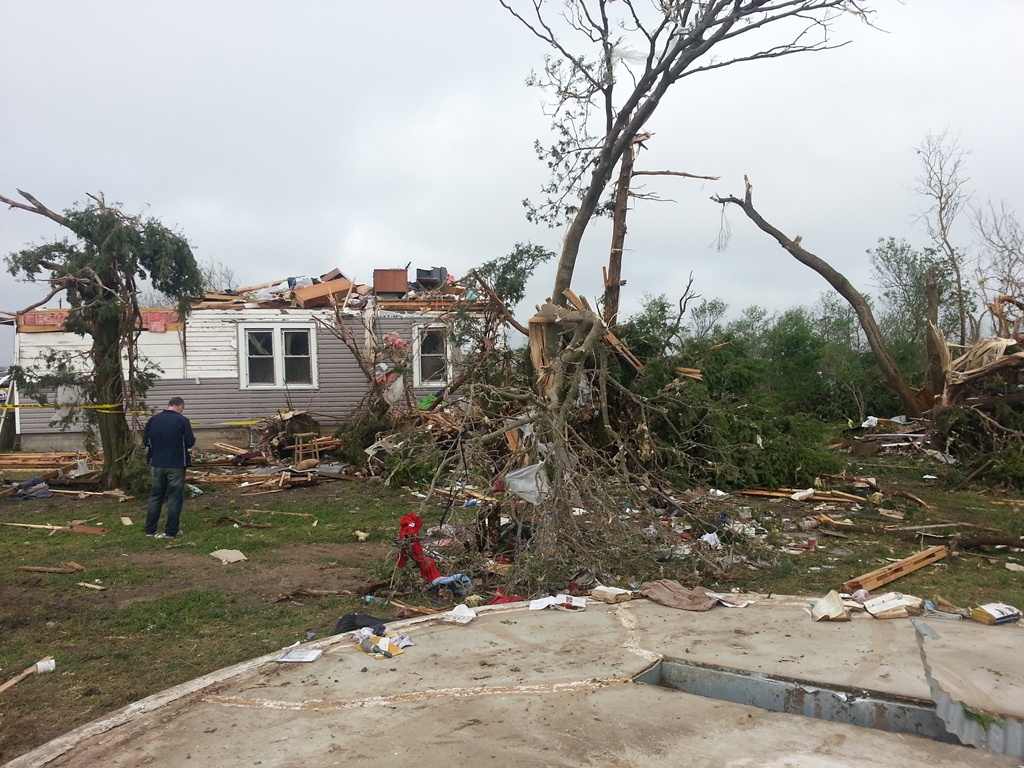I don't know what kind of math was used to assert those conclusions, but I can assume Grazulis' sentiment expressed above was either an inspiration for, or directly influenced by the same engineering mindset that led to the creation of the EF scale.
I don't know if the statements 'Winds as low as 160 MPH could have caused the damage at Jarrell' and 'One minute of F3 winds equals three seconds of F5 winds' were immediately disprovable when Grazulis first made those statements, but we certainly have a solid example now...
On May 27, 2013, the Lebanon, KS tornado was intercepted by storm chasers Brandon Ivey, Herb Stein and Sean Casey in the TIV2 vehicle. Winds up to 175 MPH (EF4) were recorded during the intercept, yet the worst damage surveyed was ultimately awarded a 140MPH EF3 rating:
As you can see, the damage is intense but definitely not violent, and a low-end EF3 rating seems appropriate despite the glaring difference in wind speed.
Here is a photo of the damage in the direct vicinity of the TIV2 vehicle, where winds up to EF4 intensity were recorded. The damage was nowhere near violent, much less Jarrell-like. Nearby evergreen trees were not even defoliated, let alone debarked.
By contrast, Greensburg managed to denude and more or less completely debark the same type of tree species.
So, with all that said, I think that's evidence enough to conclude that not only are the EF scale's wind speed estimates too low on the upper end of the scale, but the statements that 160MPH winds could have caused the damage at Jarrell and that 'one minute of F3 winds equals F5 damage' are bogus.
@Grand Poo Bah mentioned in one of his previous posts that the EF scale underestimates the wind speeds in tornadoes by an average of about 40MPH. I most definitely concur with that statement, and believe the original F scale's wind speed estimates were far more accurate.

